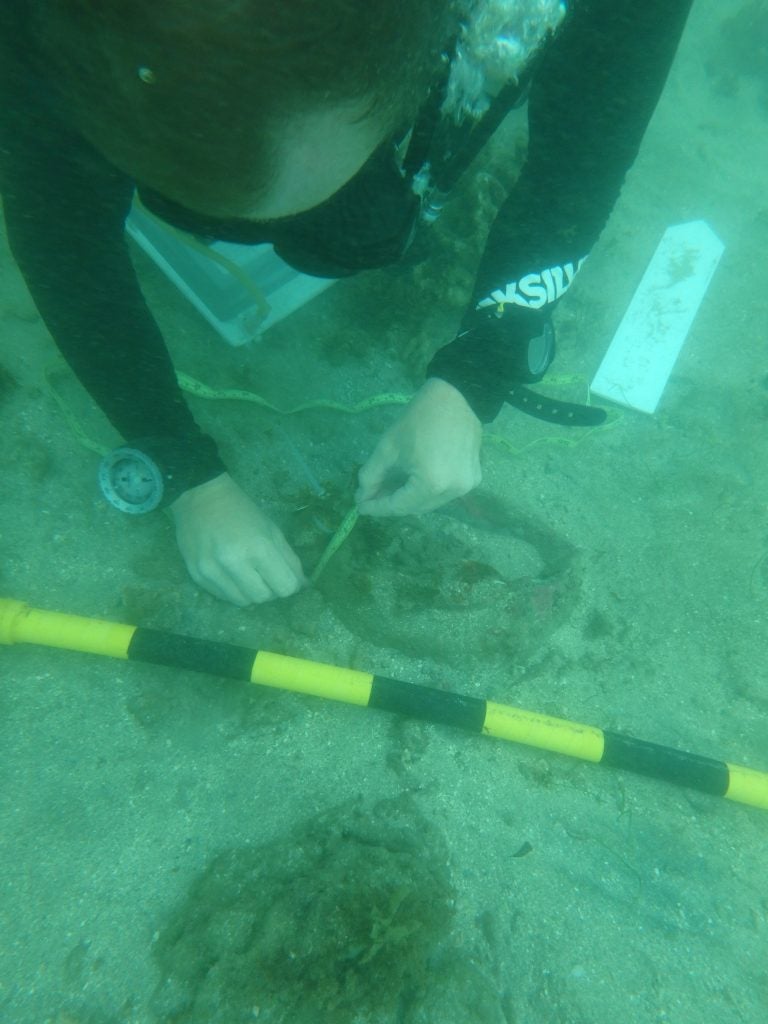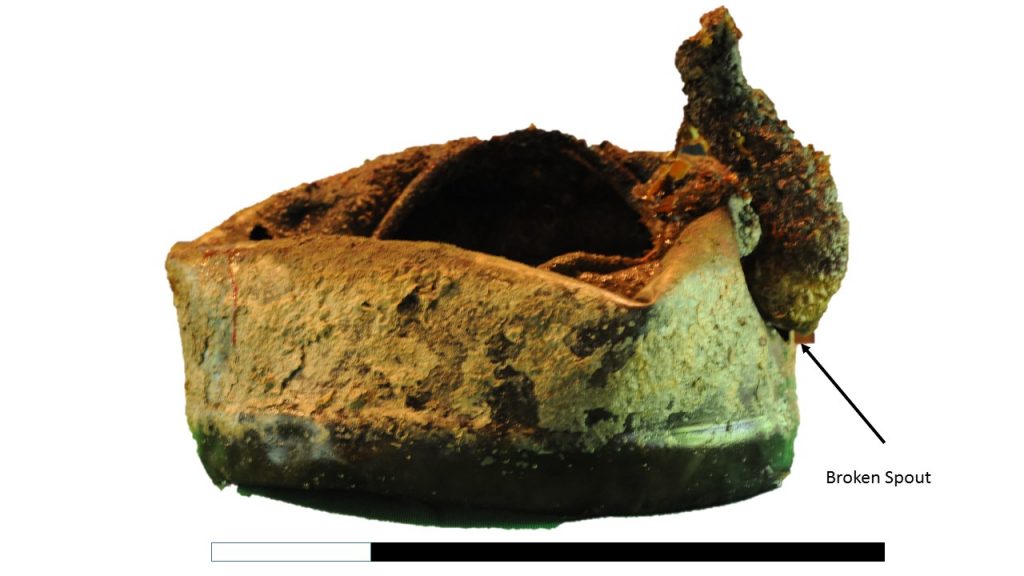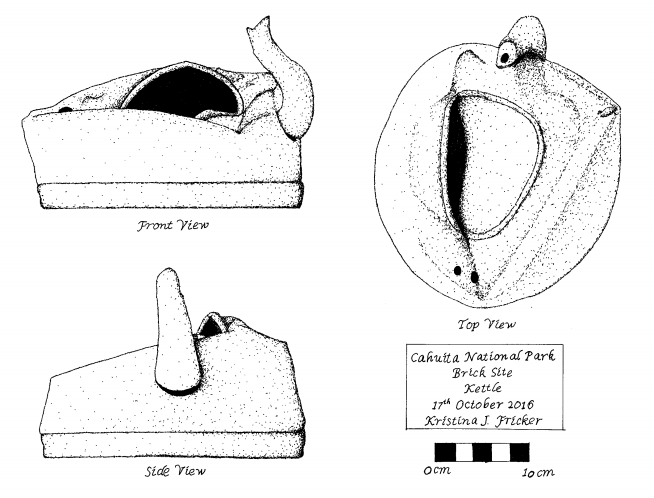
The kettle was located on the eastern side of the baseline, 13.5 meters from the 0 datum, with an offset of 2.26 meters. It was found on the sandy surface of the site, slightly embedded in sand and covered in seaweed. There was little to no coral growth on the kettle and it was only slightly concreted. It appears to have been crushed at some point and is heavily dented on one side. Jason Raupp and Tyler Ball mapped into the site plan using trilaterations and baseline offsets. It was drawn in situ by Tyler Ball.

KETTLE WITH A BROKEN SPOUT
The team that was assembled to recover the kettle utilized down a milk crate and a flat, smooth, surface in the form of a dive slate. They slid onto the slate and then placed into the milk crate. Kevin Rodríguez and Anderson Rodríguez brought the artifact to the surface. Once the kettle was securely placed in the milk crate, they swam it carefully on the surface to the dive boat.The team transported the container tub to field headquarters at La Caracola in Puerto Viejo, where it was removed from the water and digitally recorded. Sean Cox and Nathan Richards took sets of photos and began the process of photogrammetry. Kristina Fricker illustrated the kettle. The dimensions of the kettle are the following: base circumference: 88cm, approximate height of body: 16cm, thickness of kettle body:2 to .4 cm, height of spout: 13.5cm.

The next step in the research process is to determine the material that the kettle is made out of. This is useful for relative dating of the kettle due to the shift from tin or pewter to aluminum in the use of cookware. If the kettle is made out of aluminum, it will eliminate the possibility that it came from either the Fredericus Quartus or Christianus Quintus. Aluminum came into use for everyday objects in the mid to late nineteenth century. “A pure form of the metal was first successfully extracted from ore in 1825 by Danish chemist Hans-Christian. Techniques to produce aluminum in ways modestly cost-effective emerged in 1889.” (History of Aluminum 2016). Tin or pewter, on the other hand, has been in production as early as the 1630s, most notably by the Crooked Lane Wares of London. (Tinsmithing 2007).
Stanley B. Alpern (1995) lists kettles and cauldrons as a common trade good using in the slave trade. A … “commodity that became a Dutch and English specialty, made either of copper, brass or tin. Some had lids, some handles. Others, called band-kettles, had rims strengthened with wire or an iron or copper strip” (Alpern 1995). As the kettle was found on the site of an alleged slave ship wreck, it is possible that, if the kettle proves to be made of pewter or tin, that it could be a slave trade good.
Hence,should the kettle be aluminum, there are a number of reasons as to why it could be on the site. The current site of the town of Cahuita was not the original location of the first settlement of Cahuita. The original town was located on the point adjacent to the brick wreck site. It remained there until 1915, when the president of Costa Rica, Don Alfredo Gonzalez, purchased the land for the current location of the town, in thanks to the villagers for rescuing him from shipwreck in Tuba Creek (Caribbean Way). As the kettle was found close to the original location of the town, there are several possible explanations for its existence on the site. It could have been used as an artisanal fishing anchor, or could be marine debris from shipping activities in the area.
Additionally, a kettle was found by the Lighthouse Maritime Archaeology Program (LAMP) on the site of the Storm wreck in 2012. This kettle was cast iron, and likely intended mostly for boiling and pouring water. The kettle was round in shape, as opposed to later types, of which the shoulders are generally higher. Like the kettle recovered from the Cahuita site, LAMP archaeologists are uncertain as to whether or not the kettle may have been part of the ship’s regular cooking materials, or as part of the cargo.
This kettle presents several interesting questions. Where did it come from? How did it arrive on the site? What is it made out of? Results from XRF analysis will tell us much more about the kettle and its potential as an artifact from the slave ship wrecks.